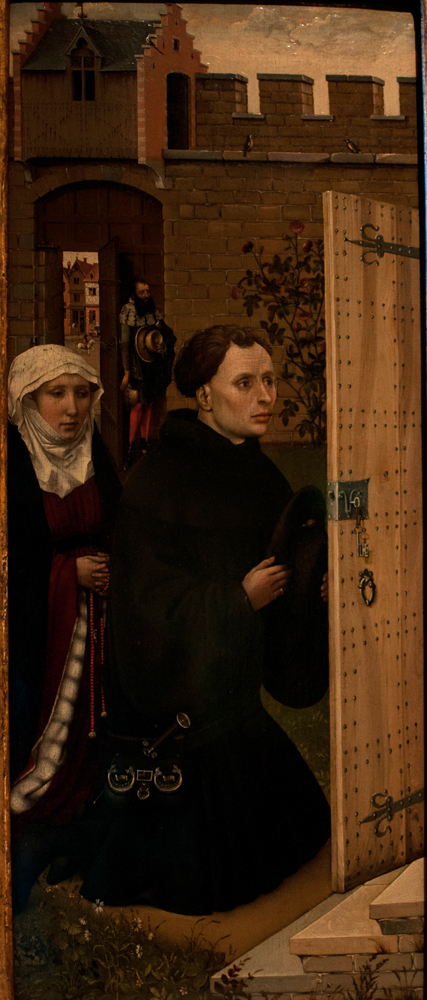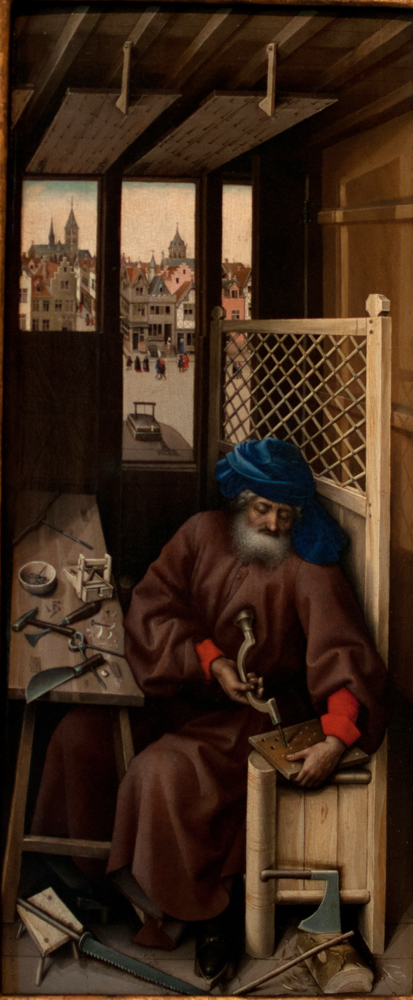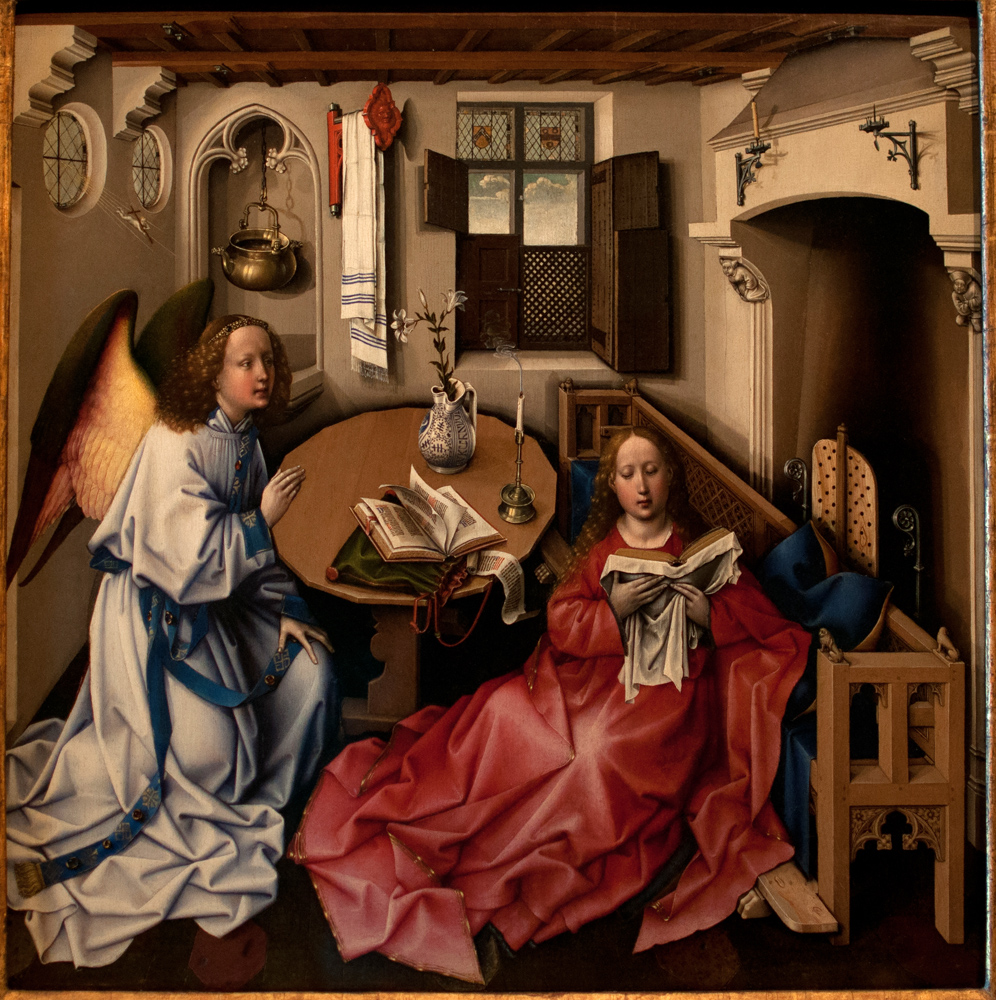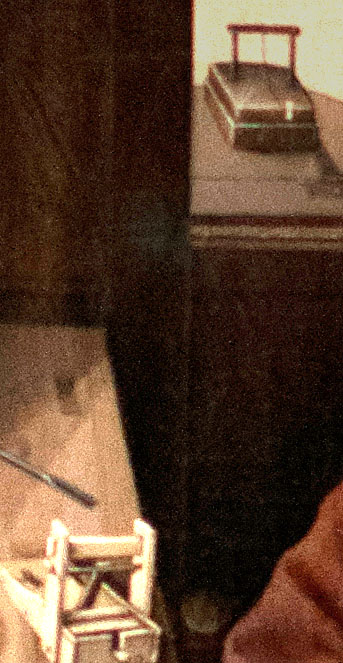

Robert Campin and Assistant, The Annunciation Triptych

South Netherlandish, circa 1425
Oil on wood. Central panel: 25¼ x 24⅞ in. (64.1 x 63.2 cm.); each wing 25⅜ x 10¾ in. (64.5 x 27.3 cm.)
The Cloisters, New York City


Art historians prize this painting for its technical perfection, but theologically it is rather problematic. The tiny figure passing through the glass window on a sunbeam is not the usual dove but Christ as a naked baby carrying a cross. This way of picturing the Incarnation, never widely popular, fell into disuse in the following century after Molanus condemned its implication that Jesus did not take his body from Mary's.
Another problem is the angle of the sunbeam, which points directly to Mary's womb — a literal-minded interpretation of the Incarnation that runs counter to the theologians' belief that the Holy Spirit entered Mary by way of her ear, for it was through the faculty of hearing that she received "the Word."
Otherwise, the painting follows the Annunciation iconography common in northern Europe in the 15th century. Mary reads scripture in a small room in a bourgeois home furnished with objects that serve the dual purpose of putting her in the viewer's social class and at the same time inviting symbolic interpretation. For example, the empty brass laver in the backgound and the vase of lilies on the table can symbolize Mary's virginity, and the extinguished candle can represent the end of the old dispensation.

Similarly, the practical objects in Joseph's workshop in the painting's right wing include two mousetraps, which some scholars consider an allusion to a common medieval trope in which Christ's flesh was the bait by which Satan was "trapped" into arranging the crucifixion of Jesus, whom he took to be a mere human. One scholar, however, dismisses this hypothesis on the grounds that the mousetraps in the image are too small and the one reference to the Crucifixion (the cross in the baby's arms) too obscure (Scott-Macnab, 21).
View the center panel, the left panel, and the right panel in full resolution.
Read more about the Annunciation and about St. Joseph
Read the Metropolitan Museum's online commentary on this painting.
Photographed at the Cloisters by Richard Stracke, shared under Attribution-NonCommercial-ShareAlike license.